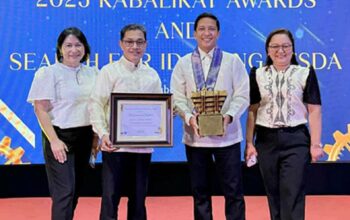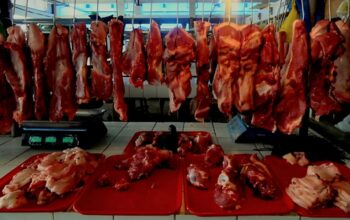
TAGBILARAN CITY, Bohol (PIA) – Six local government units (LGUs) here were granted the Community-Based Monitoring System (CBMS) to help them assess, plan, and implement development programs for their localities.
The Philippine Statistics Authority (PSA) turned over the CBMS data to the towns of Anda, Alburquerque, Batuan, Corella, San Isidro, and Sevilla on Dec. 14, 2023.
They form the first batch of LGUs to receive the CBMS from PSA.
The data is a mine of resources that would allow LGUs to check their progress and performance in the achievement of the United Nations’ Sustainable Development Goals (SDGs).
‘CARDIAC PANEL’
Anda Municipal Councilor John Louis Deligero, during the turnover, described the CBMS as a laboratory that will help his LGU diagnose its “illnesses and debilities.”
Nine of Anda’s 16 barangays were surveyed to give them a review of their attainment progress of the SDGs and possibly update their social registry for beneficiary targeting.
Mayors Antonino Jumawid of Batuan, Diosdado Gementiza of San Isidro, and Juliet Dano of Sevilla attended the first batch of CBMS turnover to the six towns on Dec. 14, 2023.
Corella Administrative Officer Eduardo Macalandag also described the CBMS as a “cardiac panel” which shows a snapshot of the LGUs’ bill of health to show which areas need to be addressed and treated.
An instrument for good governance, the CBMS would give a small town like Corella the opportunity to manage its territories well through the smart allocation of its resources, especially in poverty alleviation.
Sevilla Mayor Juliet Dano said the CBMS will help 5th class municipalities like her town reduce its poverty problem by addressing priority needs.
She describes the system as a tool that prevents LGUs from making wrong decisions and wasting precious money.
MONITORING TOOL
The CBMS is a technology-based data collection and processing system targeting households and is used as a basis for poverty alleviation programs while empowering communities to participate in the process.
Data generated by the CBMS are the compendium of localized facts, figures, and maps on the different dimensions of poverty such as health, nutrition, water, sanitation, shelter, education, income, employment, security, and participation.
Mandated under Republic Act 11315, the system gives LGUs a tool to monitor the impact of their programs and ensure that they reach the rightful beneficiaries.
The system was first rolled out nationwide in 2022 for the fourth to sixth class LGUs.
SDG PERFORMANCE
Through the CBMS, the LGUs can check how they are performing in achieving the SDGs, such as ending hunger, achieving food security, improving nutrition, and promoting sustainable agriculture.
One of the data contained in the CBMS is the percentage of households that experienced skipping a meal at least once in the past 12 months due to a lack of resources.
Anda scored the highest in this indicator at 11.42 percent, while Batuan ranked the lowest at 1.21 percent.
The next batch of CBMS data turnover is by the end of December this year for the towns of Clarin, Cortes, Guindulman, Lila, Loay, and Sikatuna.
In 2015, world leaders convened and made a historic promise to secure the rights and well-being of everyone by adopting the 2030 Agenda for Sustainable Development and its 17 SDGs.
The SDGs offer the most practical and effective pathway to tackle the causes of violent conflict, human rights abuses, climate change and environmental degradation and aim to ensure that no one will be left behind.
To know more about the 17 SDGs, visit the United Nations website. (RAHC/PIA7 Bohol)



